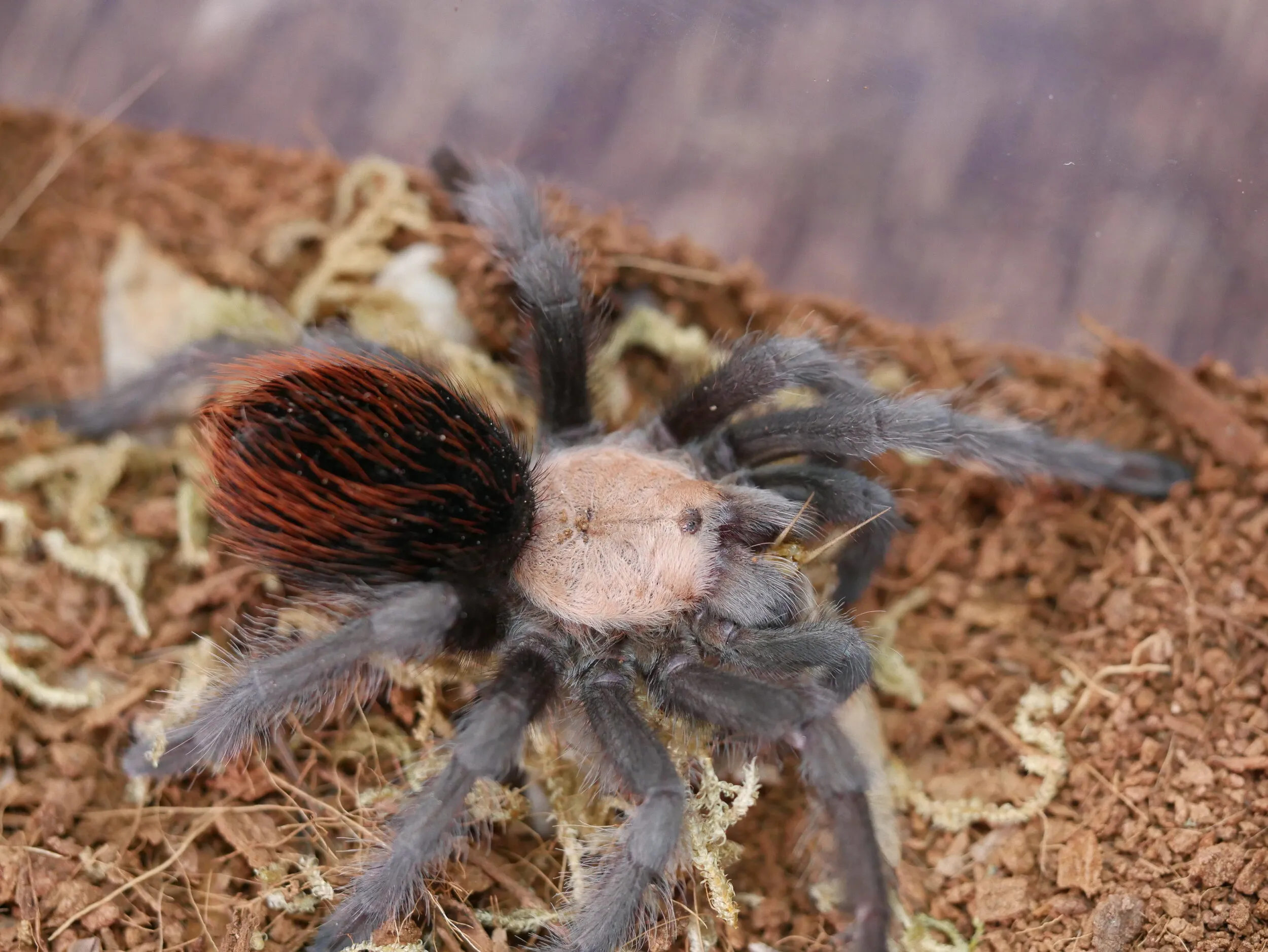Understanding the Brachypelma Albiceps
The Brachypelma Albiceps, often referred to as the Golden Knee Tarantula, is a captivating and sought-after species in the tarantula-keeping hobby. This species, native to Mexico, is known for its striking coloration and relatively docile temperament, making it a popular choice for both novice and experienced keepers. Understanding their needs is paramount to providing a healthy and enriching environment. This guide delves into the intricacies of caring for these fascinating creatures, from habitat setup and feeding to handling and health considerations. Whether you are considering adding a Brachypelma Albiceps to your family or are already a proud owner, this article provides comprehensive information to help you succeed.
What is a Brachypelma Albiceps Tarantula?
The Brachypelma Albiceps is a terrestrial tarantula, meaning it primarily lives on the ground. Its most distinguishing feature is the golden-yellow bands on its legs, contrasting beautifully with its black body. Adults can reach a leg span of up to 6 inches, making them a medium-sized tarantula. They are known for their generally calm disposition, which makes them relatively easy to handle, though it is always important to exercise caution. These tarantulas are relatively long-lived; females can live for 20 years or more, while males typically have a shorter lifespan. Their beauty and longevity make them a rewarding pet for those willing to provide proper care.
Where Do Brachypelma Albiceps Come From?
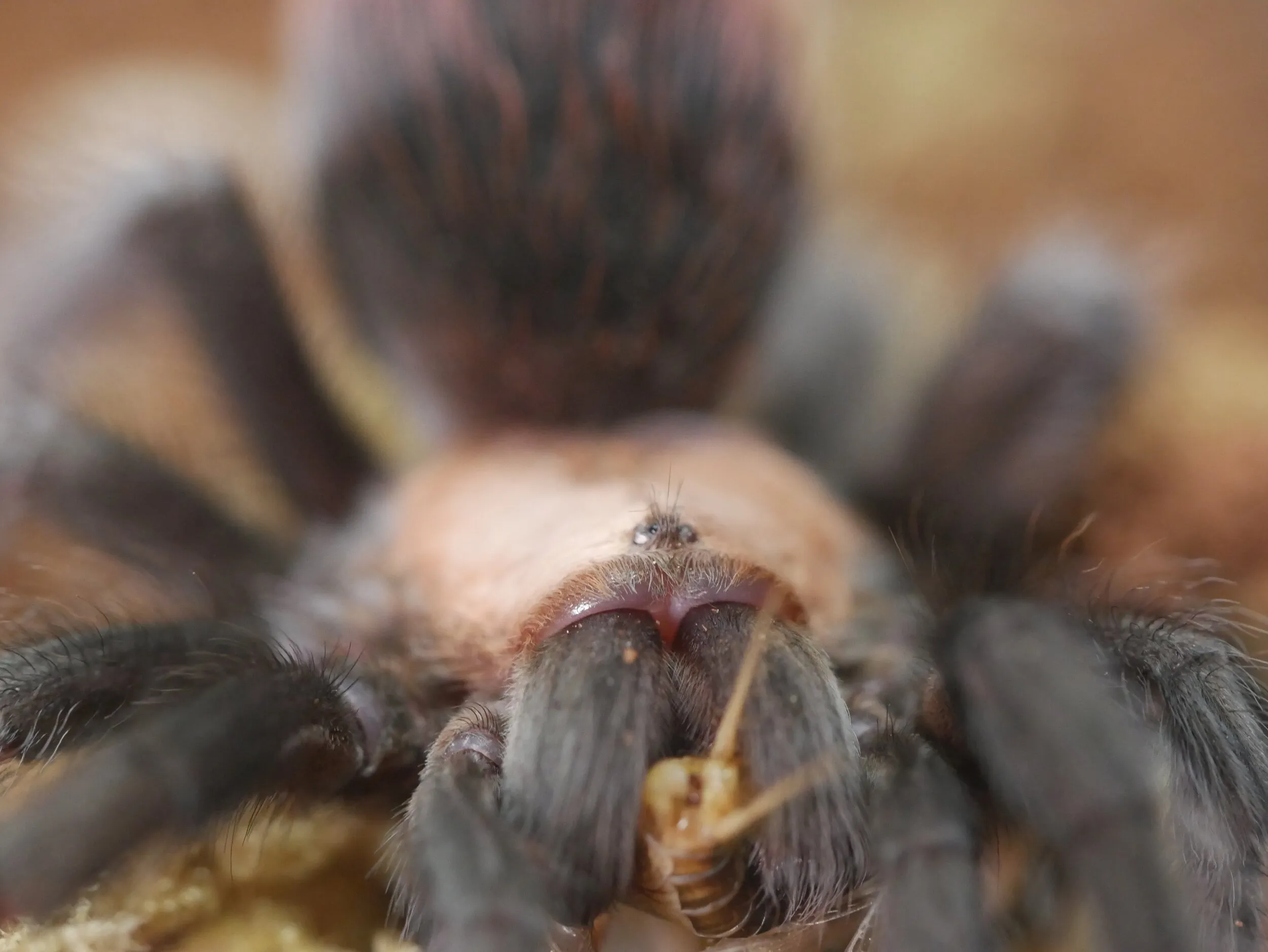
Brachypelma Albiceps tarantulas originate from the tropical forests of Mexico. They are typically found in burrows or under rocks and logs, where they create a safe haven from predators and the elements. Their natural habitat influences their behavior and needs in captivity. Understanding their origin allows keepers to replicate the ideal conditions for their well-being. The environment includes moderate humidity levels, consistent temperatures, and a varied diet. Conservation efforts are crucial as their natural habitats face threats from deforestation and habitat loss. Supporting responsible breeding practices is essential to ensure the sustainable presence of these tarantulas.
Habitat and Natural Behavior
In the wild, Brachypelma Albiceps are ambush predators. They wait patiently in their burrows or near their entrances, sensing vibrations from potential prey. They are primarily nocturnal, becoming most active during the night when they venture out to hunt. They are not social creatures, and they live solitary lives, except during mating. Understanding these behavioral patterns is vital for creating an appropriate habitat in captivity. Providing a secure burrow or hiding place and maintaining a suitable environment allows them to exhibit their natural behaviors and thrive.
Creating the Ideal Brachypelma Albiceps Habitat
Creating the ideal habitat for a Brachypelma Albiceps involves several key components: the enclosure, substrate, ventilation, temperature, and humidity. The goal is to replicate their natural environment as closely as possible, minimizing stress and promoting their well-being. Proper habitat setup is crucial for their health, longevity, and ability to exhibit natural behaviors. A well-designed habitat provides a safe and comfortable space, and it is essential to research their specific needs.
Choosing the Right Enclosure
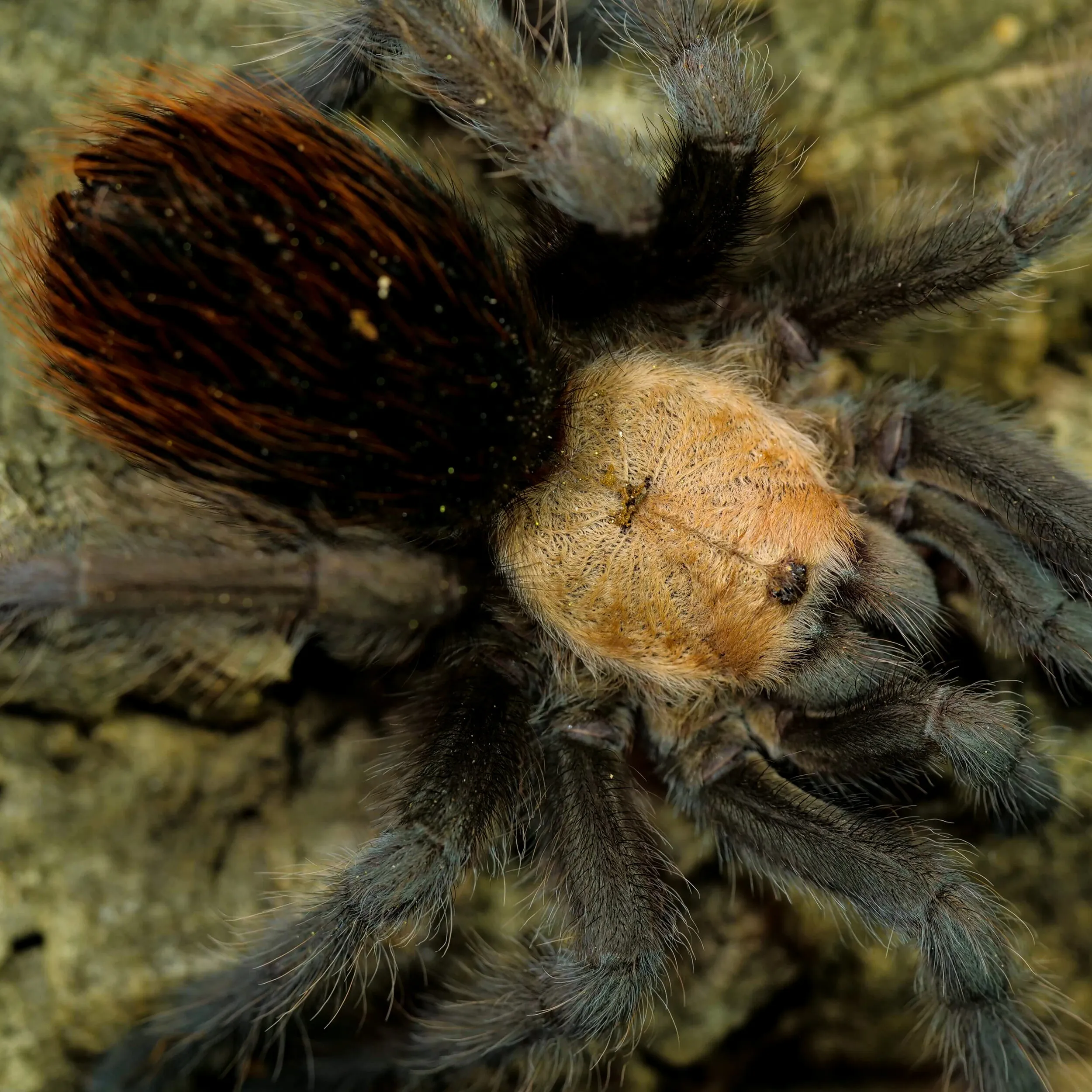
The enclosure should be appropriately sized to accommodate your tarantula’s size and allow for growth. A secure enclosure with a secure lid is essential to prevent escape. For juvenile tarantulas, a small plastic container or a 5-gallon tank is suitable. For adults, a 10-20 gallon tank is generally sufficient. Ensure the enclosure is well-ventilated but also maintains the desired humidity levels. Avoid enclosures with sharp edges or features that could injure your tarantula. Consider enclosures made of glass or clear acrylic for easy viewing and cleaning.
Substrate Selection for Your Tarantula
The substrate is the bedding material that lines the bottom of the enclosure. For Brachypelma Albiceps, a substrate that allows for burrowing and helps maintain humidity is ideal. A mixture of peat moss, coconut fiber, and a small amount of vermiculite works well. The substrate should be deep enough (4-6 inches) to allow the tarantula to burrow if it chooses. Ensure the substrate is free of chemicals or pesticides. The substrate should be lightly misted regularly to maintain the appropriate humidity levels. Avoid using gravel or sand, which can be difficult to maintain and may not allow for proper burrowing.
Providing Adequate Ventilation
Adequate ventilation is crucial for preventing mold and maintaining air quality in the enclosure. Ensure the enclosure has cross-ventilation, typically achieved by having ventilation holes on opposite sides of the enclosure. The ventilation should be sufficient to allow airflow without drying out the enclosure excessively. Avoid placing the enclosure in direct sunlight, which can cause overheating. Regular spot cleaning to remove uneaten food and waste contributes to a healthy environment. Monitor the enclosure regularly for any signs of excessive moisture or mold growth, which can be detrimental to your tarantula’s health.
Temperature and Humidity Control
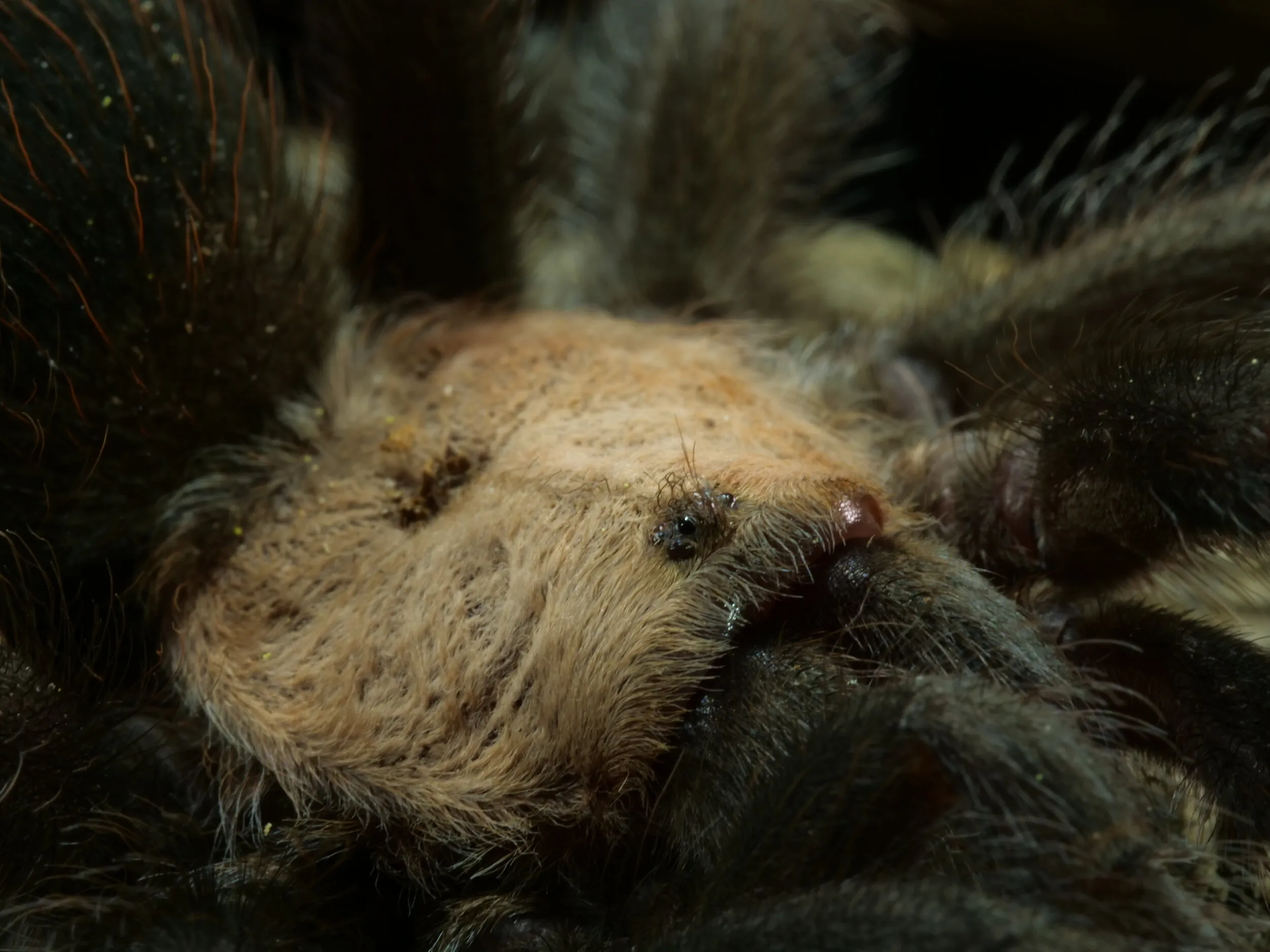
Brachypelma Albiceps thrive in a temperature range of 75-85°F (24-29°C). Use a thermometer to monitor the temperature inside the enclosure. Maintain the appropriate temperature using a heat lamp or a heat mat placed on the side of the enclosure (never directly under). Humidity levels should be maintained at around 60-70%. Monitor humidity with a hygrometer. Mist the enclosure lightly with water 2-3 times a week, depending on the ventilation, to maintain humidity. Avoid excessive humidity, which can lead to fungal infections. A water dish should always be available for your tarantula to drink from.
Feeding Your Brachypelma Albiceps
Feeding your Brachypelma Albiceps is a straightforward process, but it is crucial to provide a balanced diet. They are opportunistic feeders, meaning they will eat whatever is available. They primarily feed on insects, and providing the right type and size of prey will ensure their good health and growth. Avoid overfeeding, which can lead to health issues. A well-fed tarantula is a healthy tarantula, and understanding their dietary needs is essential for providing the best care.
What Do They Eat?
The primary diet for Brachypelma Albiceps consists of insects. Good choices include crickets, mealworms, dubia roaches, and, occasionally, small locusts. The insects should be appropriately sized for the tarantula. The rule of thumb is that the prey should be no larger than the tarantula’s body. Always gut-load the insects before feeding them to your tarantula, providing them with nutritious food for at least 24 hours before feeding. This ensures that your tarantula gets the necessary vitamins and minerals. Avoid feeding insects collected from outside, as they may contain pesticides or parasites.
Feeding Frequency and Portion Sizes
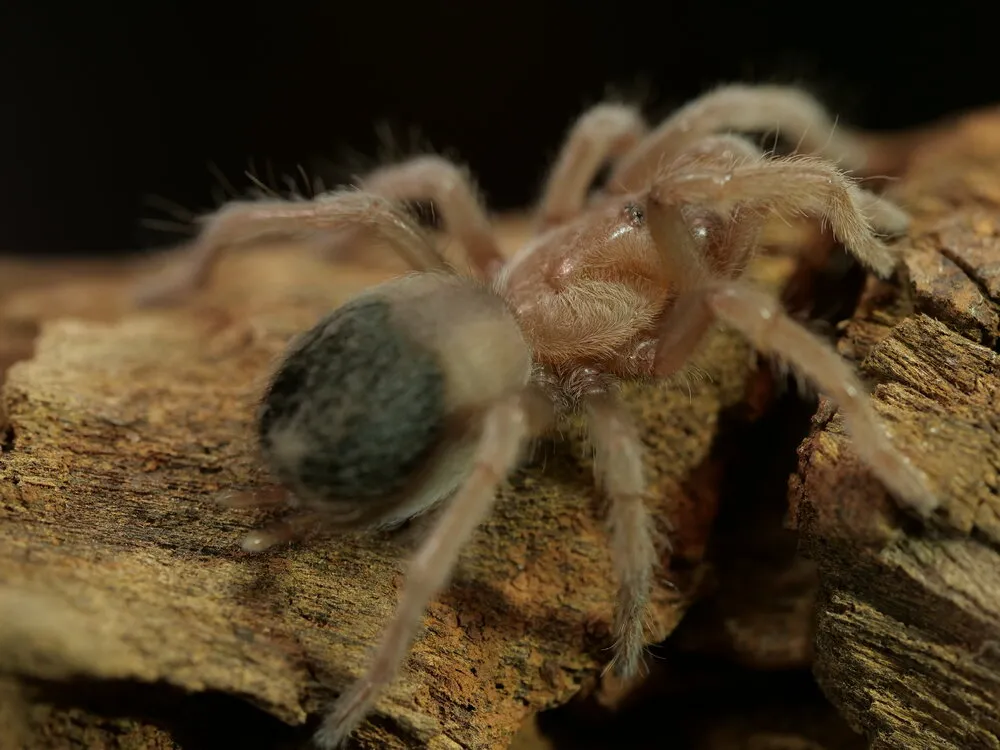
The feeding frequency depends on the tarantula’s age and size. Spiderlings and juveniles should be fed 2-3 times per week. Adults can be fed once a week or every other week. Adjust the feeding schedule based on the tarantula’s appetite and body condition. A tarantula that refuses food for an extended period may be about to molt. Remove any uneaten food within 24 hours to prevent mold growth. Monitor your tarantula’s abdomen; if it appears overly plump, reduce the feeding frequency.
Water and Hydration Needs
Fresh water is essential for your Brachypelma Albiceps. Always provide a shallow water dish with fresh, clean water. The water dish should be easily accessible and shallow enough to prevent the tarantula from drowning. For spiderlings, you may need to use a bottle cap or a small dish to prevent them from falling in. Ensure the water dish is cleaned regularly to prevent the buildup of bacteria and mold. Mist the enclosure lightly to provide additional moisture, especially during molting.
Handling and Safety Precautions
Handling Brachypelma Albiceps should be done with caution, as they possess urticating hairs and can bite if provoked. It is always advisable to minimize handling to reduce stress on the tarantula. If handling is necessary, take appropriate precautions and understand the risks involved. Always supervise children around tarantulas, and educate them about responsible pet ownership.
When to Handle Your Tarantula
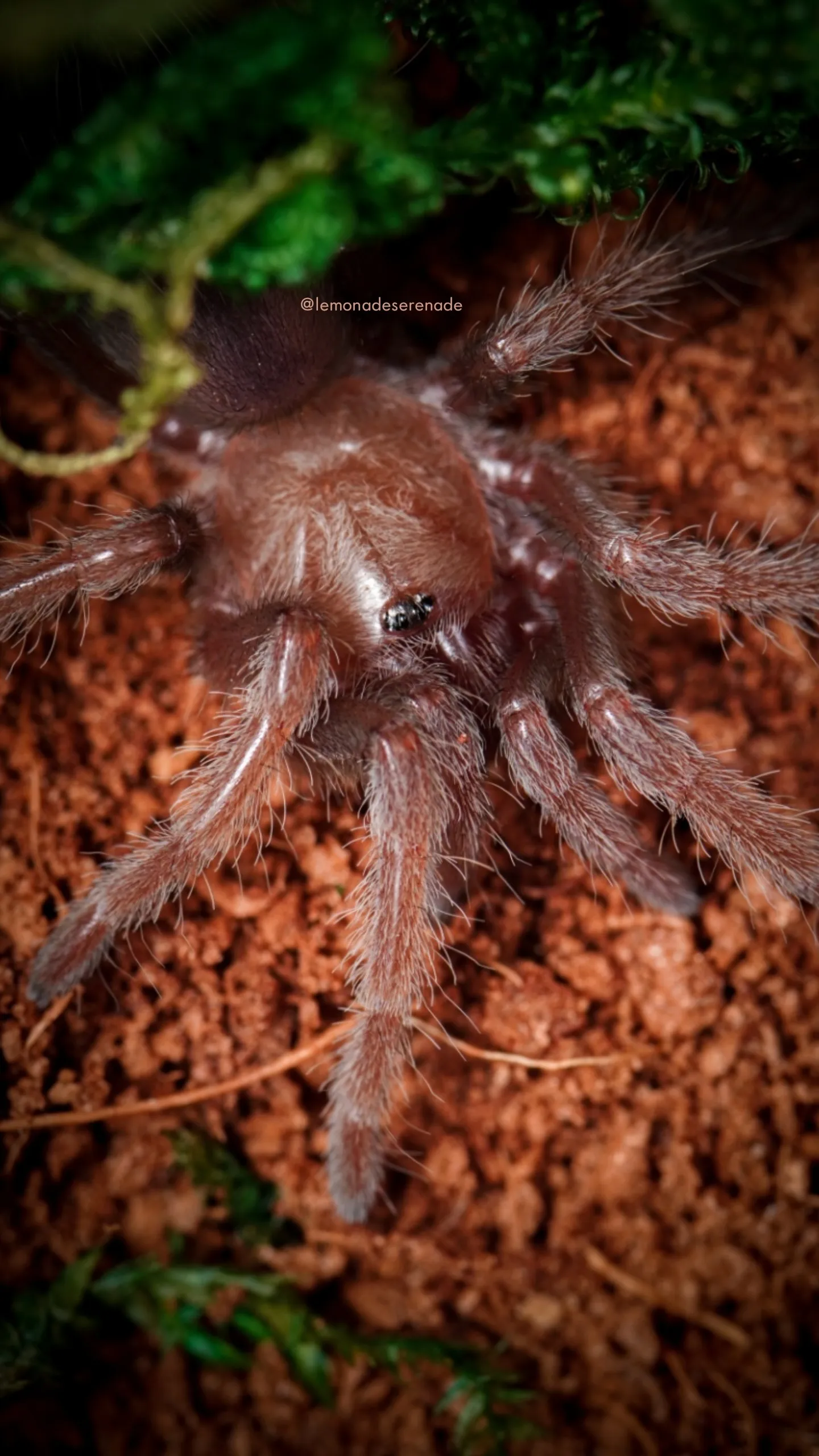
Handling should be kept to a minimum, as it can stress the tarantula. You might need to handle your tarantula for health checks or enclosure maintenance. It is best to handle your tarantula when it is calm. Avoid handling during or shortly after molting, as their exoskeletons are vulnerable. Avoid handling if the tarantula appears agitated, defensive, or showing threat postures. Build a relationship with your tarantula through observation and care, not handling. Learn the signs of stress.
Safe Handling Techniques
If you choose to handle your tarantula, do so with extreme care. Handle over a soft surface, such as a bed or a carpet, to minimize the risk if the tarantula falls. Gently encourage the tarantula to walk onto your hand. Avoid sudden movements. Do not squeeze or grab the tarantula. Wash your hands thoroughly before and after handling. Be aware of the urticating hairs; avoid brushing your face or eyes after handling. If you are bitten or encounter urticating hairs, seek medical advice if symptoms persist. Handle with confidence and a gentle touch.
Common Health Issues and How to Prevent Them
Proper care and environmental conditions are key to preventing health issues in Brachypelma Albiceps. Recognizing potential health problems and addressing them promptly is essential for their well-being. Regular observation of your tarantula’s behavior and appearance can help you identify potential issues early. A healthy tarantula is active, eats regularly, and molts successfully. Prevention through proper care is always the best approach.
Moulting: What to Expect
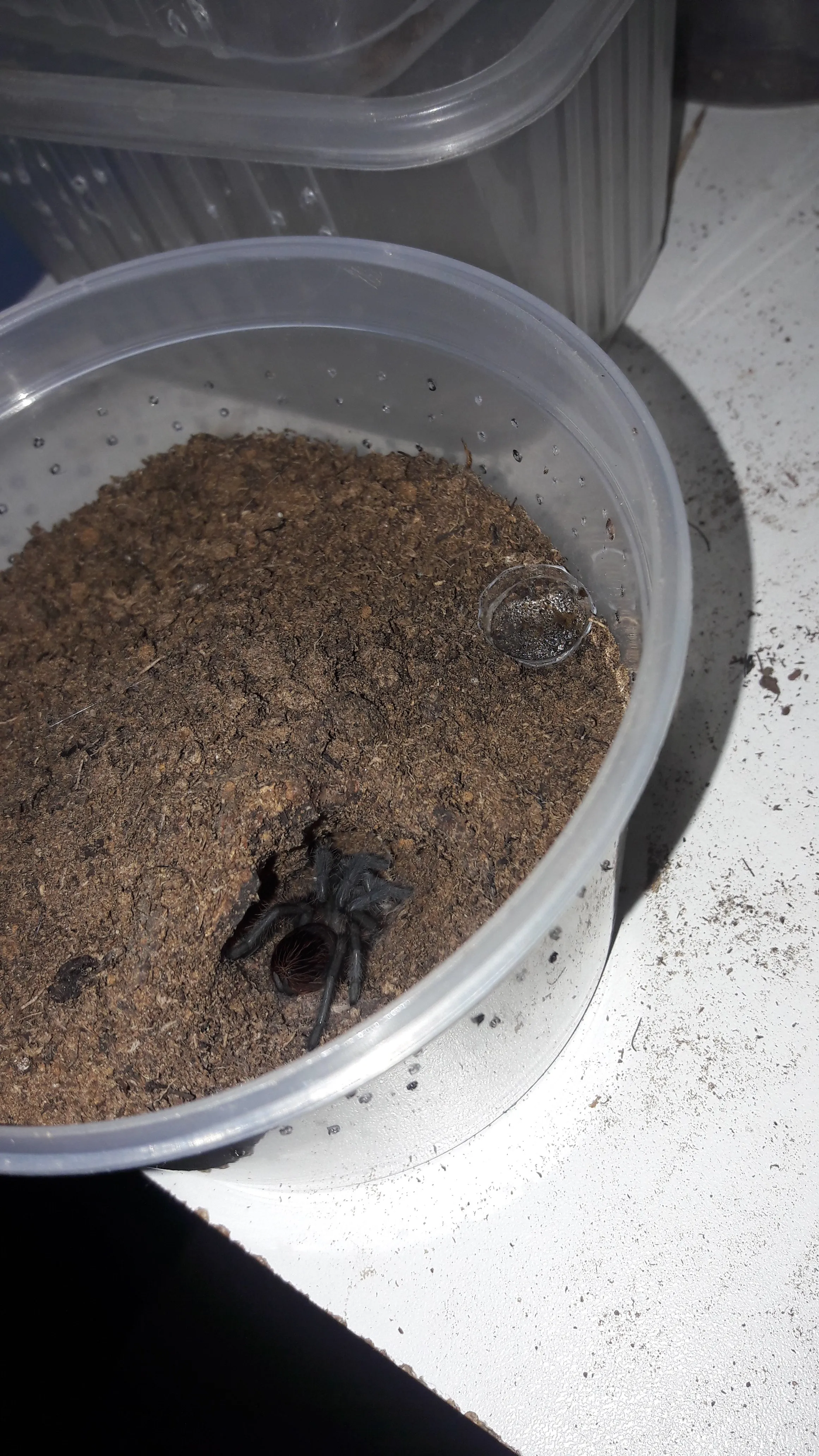
Moulting is a natural process where the tarantula sheds its exoskeleton to allow for growth. Before moulting, the tarantula may become less active, stop eating, and appear darker in color. The tarantula will often flip onto its back during the moulting process. Do not disturb the tarantula during moulting. Provide a humid environment during moulting. After moulting, the tarantula’s exoskeleton will be soft, and it will need a few days to harden. Do not feed the tarantula for a week after moulting to allow the fangs to harden. The moulting process can last from a few hours to several days.
Recognizing and Treating Common Ailments
Some common health issues to watch for include mites, fungal infections, and injuries. Mites are tiny parasites that can infest the tarantula. They often appear as small moving dots on the tarantula’s body. Treat mites by changing the substrate and cleaning the enclosure. Fungal infections can occur if the enclosure is too humid. Symptoms include discoloration or lesions. Reduce the humidity and improve ventilation to prevent fungal infections. Injuries can occur if the tarantula falls or is bitten by prey. If you notice any injuries, consult with a veterinarian experienced in exotic animals. Always quarantine a sick tarantula. Consult with a specialist.
Breeding Brachypelma Albiceps (Optional)
Breeding Brachypelma Albiceps is a rewarding but challenging endeavor. It requires careful planning, preparation, and knowledge of the tarantula’s life cycle. Breeding is not recommended for novice keepers. Breeding is best left to experienced keepers. If you are considering breeding, thorough research is required.
Setting Up a Breeding Enclosure
The breeding enclosure should be similar to the adult tarantula’s enclosure, but larger and more elaborate. Provide a suitable substrate, hide, and water dish. The enclosure should be free of any potential hazards. The enclosure should be prepared for the female and male. Introduce the male to the female’s enclosure. Monitor the pair closely for signs of aggression.
The Mating Process
The mating process can be dangerous for the male, as the female may attempt to eat him. The male will often drum on the ground and present a mating dance. The male will insert sperm webs into the female’s epigastric furrow. After mating, the male should be removed from the enclosure. The female will lay an egg sac. The egg sac contains eggs that will hatch into spiderlings. Monitor the female to ensure she is healthy and well-fed after mating.
Caring for Spiderlings
Caring for spiderlings requires patience and dedication. Separate the spiderlings into individual containers to prevent cannibalism. Provide small insects, such as fruit flies or pinhead crickets, for food. Maintain the appropriate temperature and humidity levels. The spiderlings will molt several times as they grow. Provide regular cleaning and maintenance of the spiderling enclosures. The spiderlings will eventually become adult tarantulas.
Conclusion
Caring for Brachypelma Albiceps tarantulas can be a fascinating and rewarding experience. By providing the right habitat, proper feeding, and understanding their needs, you can ensure that your tarantula thrives. Remember to prioritize safety, handle them with care, and always do your research. Enjoy the beauty and unique characteristics of your golden knee tarantula, and you will have a wonderful pet for many years to come. This detailed guide provides all the necessary information for proper care. Enjoy the fascinating world of tarantula keeping!
